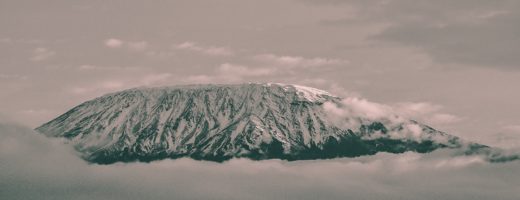Following in the tradition of homophobic Africa, LGBT citizens keep their lives and activities in the shade, slowly working at grass roots levels to make their presence known.
Tanzania’s name comes from a combination of Tanganyika, which is the large mainland territory, and Zanzibar, the offshore archipelago. The two former British colonies united in 1964, forming the United Republic of Tanganyika and Zanzibar, which later the same year was renamed the United Republic of Tanzania. The economy is mostly based on agriculture, which accounts for more than half of GDP, provides 85% (approximately) of exports, and employs 80% (approximately) of the workforce. In Tanzania, sex acts between men are illegal, and carry a penalty of life imprisonment. Sex acts between women are not mentioned in Tanzanian law.

Tanzania – Mount Kilimanjaro
Like a huge crown on the vast green lands of Tanzania, Kilimanjaro rises high and majestic above the rural and impoverished human-scape below. Countless people climb the lower slopes every day equiped only with street shoes and a bottle of water. More serious climbers take a week for the journey up and back, accompanied by
Tanzania – Masai Country
The wide-ranging Maasai (or Masai) tribe is spread over northern Tanzania and southern Kenya. They are rural nomadic people who herd animals–sheep, cows, goats–and do not raise crops. Their diet is mostly milk, porridge, maize, beans and some meat. Easily identified by their deep red and bright blue garments, they nevertheless can often be seen
Tanzania – Ngorongoro Crater
The crater in the Ngorongoro Conservation Area is the world’s largest unbroken, unflooded volcanic caldera. The Crater, which formed when a giant volcano exploded and collapsed on itself some two to three million years ago, is 610m deep and the floor is 260km2 (102 square miles). Estimates of the height of the original volcano range
Tanzania – Zanzibar (1)
Zanzibar is an island 25–50 km (15–30 mi) off the east coast of Tanzania; it consists of numerous small islands and two large ones: Unguja (the main island known as Zanzibar), and Pemba. Zanzibar was once a separate country with a long trading history within the Arab world; it united (not without bloodshed) with Tanganyika
Tanzania – Zanzibar (2)
Zanzibar is an island 25–50 km (15–30 mi) off the east coast of Tanzania; it consists of numerous small islands and two large ones: Unguja (the main island known as Zanzibar), and Pemba. Zanzibar was once a separate country with a long trading history within the Arab world; it united (not without bloodshed) with Tanganyika
Tanzania – Dar es Salaam (1)
Dar-es-Salaam is a city of about 2 1/2 million people that bustles during the work day and is quiet at night. It’s not the capital of Tanzania but is the largest city in the country and one of the most important shipping ports on the African east coast. Countless shopkeepers sell every imaginable type of
Tanzania – Serengeti Plain
The Serengeti is hard to take in at first given the density of wildlife that appears at first to be in peaceful coexistence–except for the occasional necessary food kill. The Serengeti is located in north-western Tanzania and extends into southern Kenya. It covers about 30,000 sq km and hosts the largest and longest overland twice-yearly
Tanzania – Dar es Salaam (2)
Dar es Salaam is a city of about 2 1/2 million people that bustles during the work day and is quiet at night. It’s not the capital of Tanzania but is the largest city in the country and one of the most important shipping ports on the African east coast. Along the north shore are

